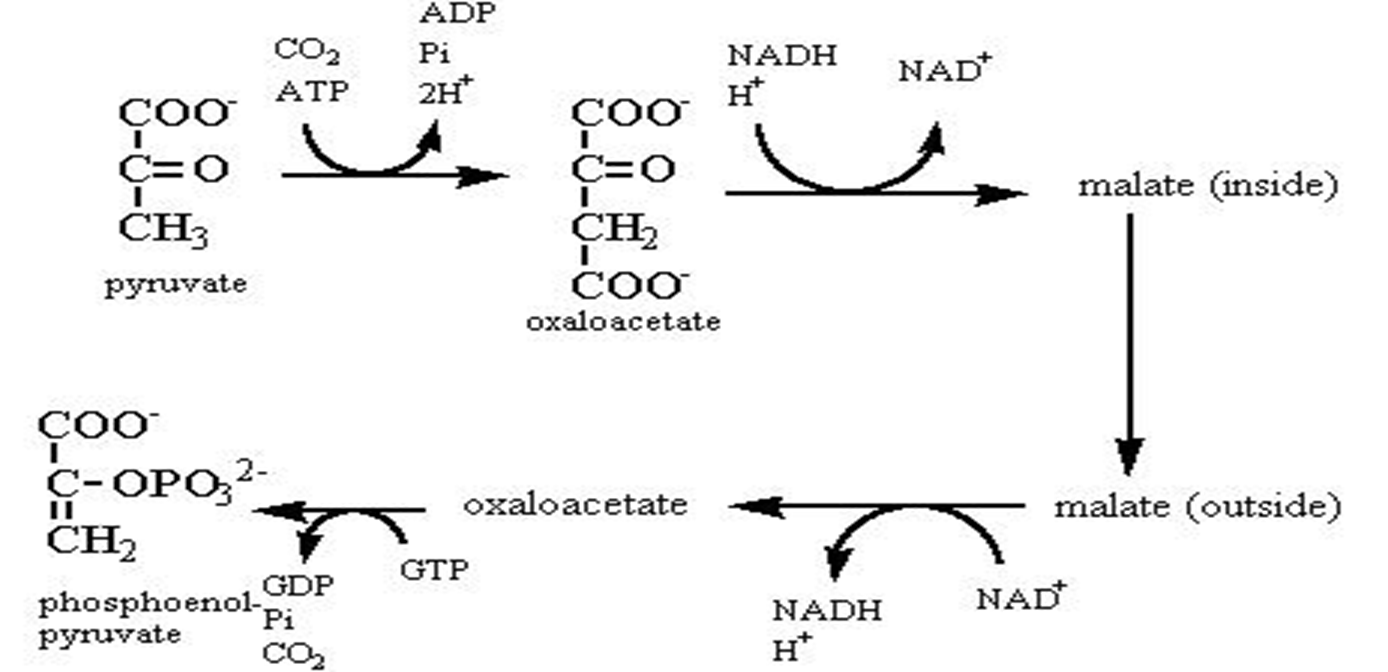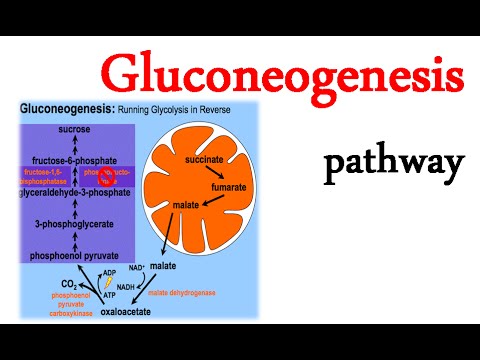
Gluconeogenesis
- It is the process of formation of new glucose molecule from carbohydrate or non-carbohydrate precursor. The important precursor are lactate, pyruvate and glycerol as well as certain aminoacids.
Gluconeogenesis from Pyruvate
- The end product aerobic glycolysis is pyruvate. But glucose cannot be produced by reversing the glycolysis process because there are three irreversible steps in glycolysis.
- Gluconeogenesis from pyruvate share 7 reversible steps of glycolysis and the 3 irreversible steps are bypassed by the separate sets of enzymes.
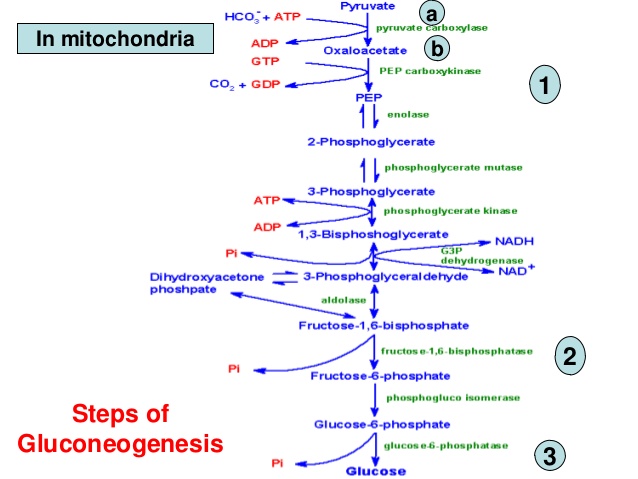
The bypass reaction that occur during conversion of pyruvate to glucose are
- Conversion of pyruvate to Phosphoenolpyruvate (PEP)
- Conversion of Fructose-1,6-bisphosphate to Fructose-6-phosphate
- Conversion of Glucose-6-phosphate to glucose
Bypass step I: Conversion of Pyruvate to PEP:
- It is the first bypass reaction in gluconeogenesis
- The conversion of pyruvate to PEP occurs in both cytosol and mitochondria.
- First pyruvate is transported from cytosol into mitochondira or it is generated in mitochondria from alanine by transamination (urea cycle)
- Then pyruvate carboxylase) coenzyme-biotin) converts pyruvate to Oxaloacetate within mitochondria.
Pyruvate + HCO3- +ATP—————— Oxaloacetate + ADP + pi
- The mitochondrial membrane do not have transporter for Oxaloacetate. So, oxaloacetate is reduced to malate by mitochondrial enzyme malate dehydrogenase
Oxaloacetate + NADH + H+—————– malate + NAD+
- Malate leaves the mitochondria through special transporter and in cytosol it is reoxidized into oxaloacetate by the cytosolic enzyme malate dehydrogenase.
Malate + NAD+———————- Oxaloacetate + NADH + H+
- The oxaloacetate is then converted to Phosphoenol pyruvate (PEP) by an enzyme phosphoenolpyruvate carboxykinase. This reaction is Mg++ dependent and require GTP.
Oxaloacetate + GTP—————- PEP + GDP + CO2
Bypass Step II: conversion of Fructose-1,6-bisphosphate to Fructose-6-phosphate
- This reaction is catalyzed by an enzyme fructose-1,6-bisphospatase (FBPase-1)which causes the irreversible hydrolysis of phosphate at C1.
Fructose-1,6-bisphosphate +H2O—————–fructose-6-phosphate + Pi
Bypass step III: conversion of glucose-6-phosphate to glucose
- This reaction is catalyzed by glucose-6-phosthatase which hydrolyses the phosphate at C6 yielding glucose.
Glucose-6-phosphate +H2o ————— Glucose + Pi
Other precursors such as lactate, intermediates of TCA cycle and some glucogenic aminoacids can also convert into glucose.
1. Conversion of lactate:(cori’s cycle)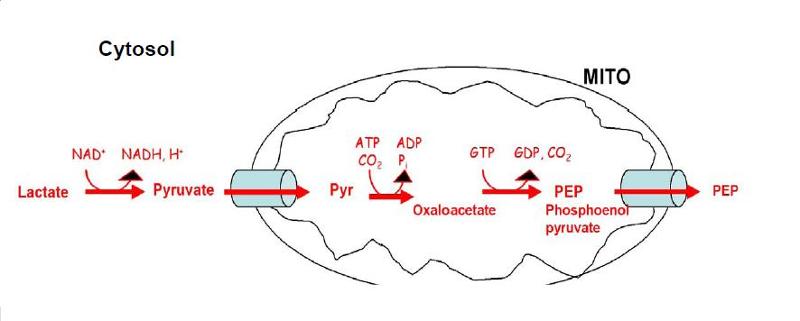
- Lactate generates during anaerobic respiration in Erythrocytes and in muscle during heavy exercise is converted into pyruvate by an enzyme lactate dehydrogenase.
- Pyruvate then enter into mitochondria from cytosol and convert into Oxaloacetate by the enzyme pyruvate carboxylase
- Oxaloacetate directly convert into PEP (phospoenolpyruvate) by an isoenzyme PEP carboxykinase within Mitochondria.
- PEP is then transported outside of mitochondria to continue gluconeogenesis.
2. conversio of TCA intermediate and aminoacids into glucose: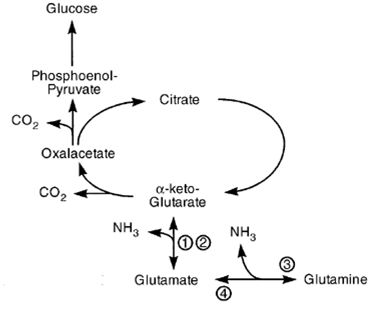
- Citrate, isocitrate, alfa-ketoglutarate, succinyl coA, succinate, fumarate, malate etc all intermediates of TCA cycle are oxidized to oxaloacetate which then converts in glucose.
- The glucogenic aminoacids such as alanine, glutamine etc. are converted to pyruvate which in turn converts to glucose.
Significance of gluconeogenesis:
- Glucose is universal building molecule and provides energy to all cells. Mainly brain cell and nervous tissue as well as erythrocytes, testes, renal medulla require glucose as sole source of energy.
- Glycogen stored in adipose tissue and in skeletal muscle are converted to glucose by glycogenolysis. However the stored glycogen may not be sufficient during heavy exercise, diabetic conditions, etc. so during shortage glucose is synthesized from carbohydrate or non-carbohydrate precursor by the process called gluconeogenesis.

